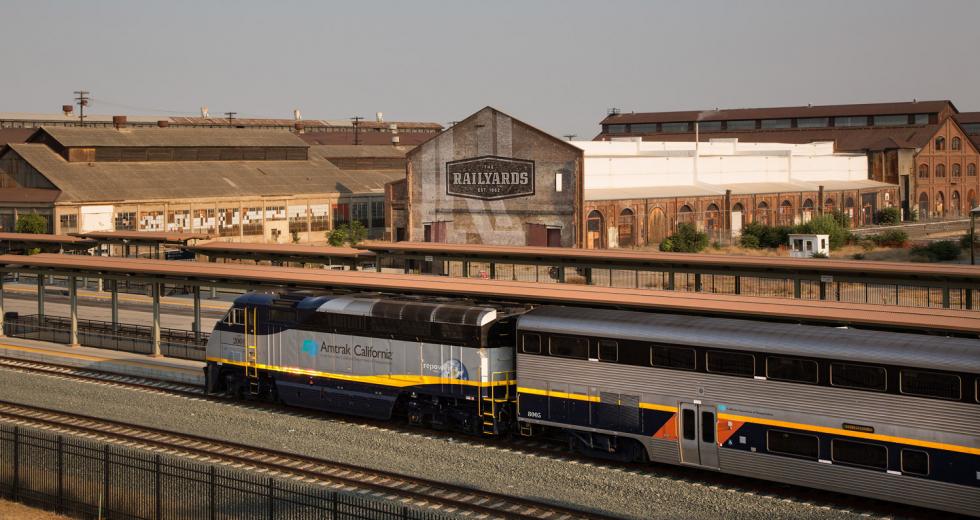Ever since the Golden Spike was driven into the ground, 150 years ago this month, trains have played a critical role in Sacramento’s growth and identity.
The Transcontinental Railroad opened up a frontier market 1,900 miles away. The train shaved a couple of months off the time it took to go west by steamer and at about one-tenth the cost. It brought people with new ideas west and transported goods from Sacramento east.
For the next 130 years, the railroad drove the industrial economy
of Sacramento. The railyard on the northern edge of town was a
hub of manufacturing as the western terminus of the line.
Southern Pacific employed as many as 3,000 craftsmen to build or
maintain all of the equipment it took to run a railroad.
Mechanics repaired locomotives. Lumbermen cut ties to lay track
on. Carpenters and upholsterers created seats and furnishings for
passenger cars. Forges fabricated everything from engine parts to
the silverware used in the dining car.
Today, Sacramento’s economy produces different products, and
workers are more likely to carry briefcases than tool belts. But
the railroad still plays an important role. The Capitol Corridor,
which runs between Auburn and the Bay Area, ferried 1.6 million
passengers last year, a 6 percent increase from the year before.
It’s the fourth-busiest passenger line in the country, an
attractive alternative to crowded freeways carrying workers from
the foothills and Roseville to Sacramento.
But most passengers don’t get off the train in Sacramento —
they go on to the Bay Area, many to jobs in the high-tech
industry that Sacramento’s business leaders are eager to attract
here. It’s early evidence of the megaregional economy many urban
planners see in our future, as major job centers sprawl into
nearby metropolitan areas.
Sacramento and Stockton are on the eastern edges of what some
people already call the Northern California Megaregion. One price
we pay for that proximity to the Bay Area are roads over Altamont
Pass or west to San Francisco that look like parking lots at
commute time.
If Sacramento and Stockton are to enjoy more benefits from this
regional growth, trains play a critical role. A third rail line
between Sacramento and Roseville is in the final planning stages,
with construction to start in two years. That will add two trains
a day for Sacramento commuters.
But the Capitol Corridor staff is looking further down the tracks and deeper into the future to strengthen the connection between the Bay Area and Sacramento. If early talks with Bay Area Rapid Transit are successful, there could be a second Trans-Bay Tube to allow trains directly into San Francisco, adding capacity and replacing the inconvenient buses that now ferry passengers over the Bay Bridge from Oakland.
The Capitol Corridor train already has locomotives, manufactured in Sacramento, that meet the most advanced emission standards and are capable of running 125 miles an hour to speed up service to the Bay Area.
In the Bay Area, some people want to rebuild the long-abandoned Dumbarton train bridge to improve travel across the bay from Stockton to Redwood City. Facebook, which needs to make commuting easier for its employees, has already pledged $1 million toward environmental studies to get the plan moving.
Improving our reach into an economy 200 miles away is just as important now as the 1,900 mile reach of the Transcontinental Railroad a century and a half ago — and just as visionary. Like many long-term visions, it may take a decade or two before these ideas become real trains on the track. But, as we saw with the ill-fated High Speed Rail Project, putting good planning and strong financing into place early on is critical to long-term success.
It’s not too soon to say “all aboard” for these plans if Sacramento and Stockton are to be more than a commuter stop in this new megaregional economy.
Correction: We misidentified where the Dumbarton train bridge would go across the bay. It would go to Redwood City. We regret the error.




Comments
Stockton to *Redwood City, not Union City